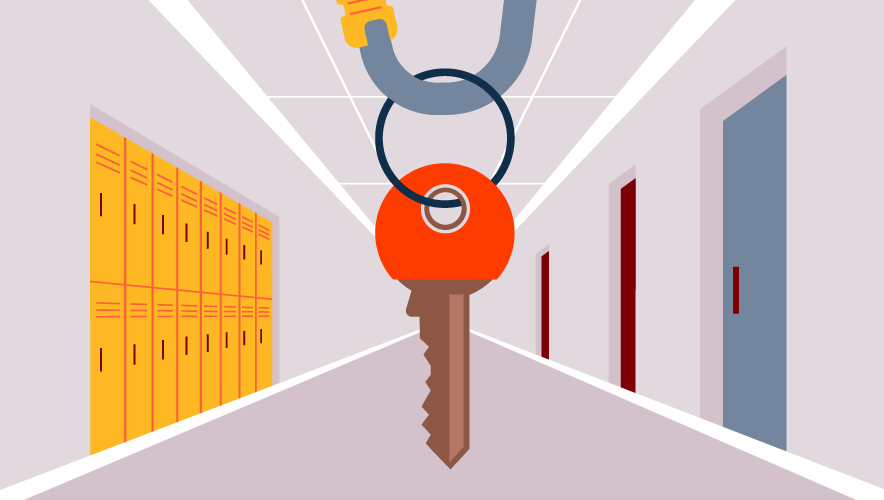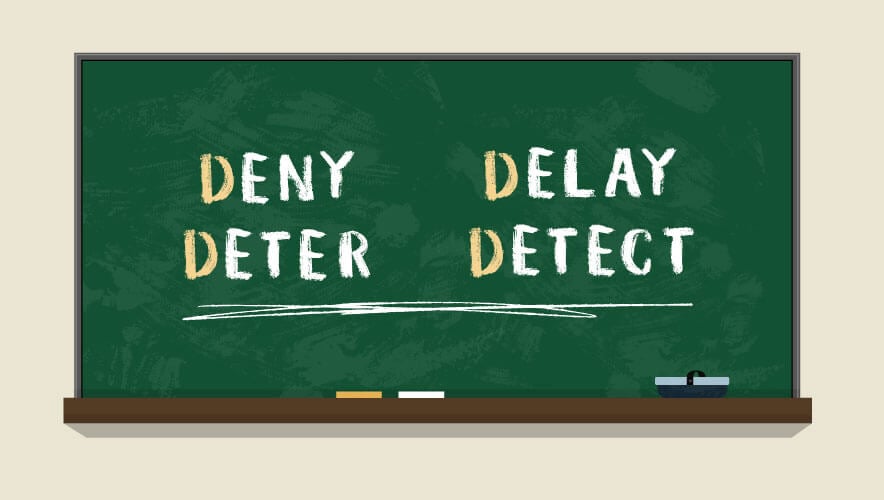4 Strategic Steps to Move School Security Forward
School safety is a priority for faculty, administrators, parents, and students alike. According to a recent report from Motorola Solutions, 67 percent of both K-12 school parents and teachers were much more concerned about safety in 2023 than they were five years ago.
Their concerns are understandable, given that there have been more than 180 school shootings in the United States resulting in injuries or deaths since 2018. On top of worries about violence, school personnel must also consider and prepare for day-to-day emergencies, including medical and mental health incidents.
Today’s educators are asked to put the safety, security, and protection of staff and students above all else. Given these heightened responsibilities and the myriad emergencies unfolding on campuses, it’s important to holistically assess the people, processes, and technologies that are in place for safety. The following considerations can serve as a springboard as you look to move school safety forward in 2024 and beyond.
Put People First
Start with the overall experience that you want to provide for students and faculty. Then, assess the safety procedures and how people are impacted: When do administrators meet with public safety leaders to align on school safety strategies? Do key staff members understand their role during emergencies, and is there a process in place to swiftly reassign those responsibilities when staff changes occur? Are they empowered to take action when emergencies occur? In addition to school lockdowns, is there a plan for active shooter drills? Simulations and training help build muscle memory and reveal opportunities for improvement.
Communication is critical to keep people connected during crises. How do school employees notify one another when typical emergencies occur and 911 involvement may or may not be needed? How are school personnel, public safety agencies, parents, and others notified when large-scale incidents require streamlined, reliable communication in real time?
In the event of an emergency, 57 percent of teachers surveyed for the K-12 School Safety: 2023 Survey Report indicated they would typically use a classroom phone to call the main office—an approach that does not simultaneously loop in school district officials, 911 call handlers, or first responders who may need to act quickly. Panic button technologies can quickly connect those in need with those who can help, while mass notification solutions can be used to alert parents and others via different communication channels.
Assess and Adjust
Best practices and technologies are always evolving, making periodic safety assessments critical. Walk through buildings and across school grounds to identify security vulnerabilities. Use the U.S. Department of Homeland Security Cybersecurity and Infrastructure Security Agency’s School Security Assessment Tool or the Partner Alliance for Safer Schools (PASS K-12) Safety and Security Guidelines to review and record the methods that are in place at your school and where improvements may be needed.
Share your assessment with district administrators, school technology personnel, school board members, and public safety officials, and work together to determine where gaps exist and changes can be introduced. Discuss the budget dollars available and additional sources of funding such as government grants.
Keep Pace with Progress
Generally, educational leaders are not technology experts. This is why school and public safety officials should work in tandem to identify the right safety and security solutions. For years, schools have used standalone devices and systems. Voice communication technologies have operated on one system while video security runs on another. Visitor management and mobile video solutions with artificial intelligence analysis have been disparate too.
The beauty of modern-day technologies is that they tend to be interoperable and exponentially more powerful. Integrated systems—including video security cameras, access control, radios, panic buttons, mass notification systems, and mobile safety apps—allow for fast and informed coordination between administrators, school staff, and first responders.
When new innovations or protocols are introduced on campus, be sure to communicate about these new capabilities. In the 2023 survey, 71 percent of teachers said that their school has adopted new safety technology in the last two years, but 54 percent of parents said they haven’t seen any new technologies implemented. Take proactive steps to bridge the information divide by making public safety partners, teachers, and parents aware of your school’s security strategies.
Plan and Revisit
Analyzing processes, assessing security investments, and exploring opportunities for innovation can be confusing and time-consuming. Establish one-, three-, and five-year plans that look at staffing, training, technologies, and system integrations. Find a trusted security partner to help your school or district identify voids and recommend the right solutions for your budget.
Once your plan is in place, conduct an annual security assessment, both to ensure that your current systems and protocols are working well and to determine whether there are new offerings or guidance that you may want to explore further.
When educational leaders advocate for and adopt a proactive, prescriptive approach to school safety, it allows faculty, staff, and families to focus on what really matters: learning and growing.
Sharon Hong is vice president of Ecosystem Solutions at Motorola Solutions. She works hand in hand with enterprise customers, including schools, hospitals, and businesses, to understand their unique safety and security challenges and introduce innovative technology solutions. Hong holds a bachelor's degree in electrical engineering from the University of California, Los Angeles (UCLA), and a master’s degree in engineering management from the University of Southern California.

















